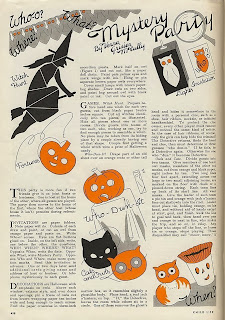Told in four vignettes,
Ronnie's War is about the wartime experiences of Ronnie Warren, whose father is off fighting for Britain. It begins on the first day of the war and ends on VE day.
The first vignette, Blitzkrieg, begins on the first day of the Blitz and Ronnie, 11, decides that today is the day he will not go with his mum to visit boring Auntie Edna. Instead, he just rambles through the day, but when the
Luftwaffe arrives along with fear, Ronnie risks everything to get to his mum and make sure she is OK. When he gets to his auntie's, the house is on the verge of collapsing and no one will let him near it. Still, Ronnie manages to get himself inside and finds his mum and auntie under a piles of debris. But his mum is still alive, and Ronnie manages to get her out of a slim opening with the help of a fireman just before the whole thing collapses.
The second vignette, Top Bunk Boy, begins after Ronnie's mum has recovered from her injuries and begun doing war work. Ronnie finds himself evacuated to Lancashire and billeted with a woman whose only interest is her son, Eric, an stutterer who runs hot and cold. Neither are very welcoming and Ronnie finds the same reception at the new school he begins attending. In fact, on his very first day, he receives three hard raps on his knuckles with a ruler from his sadistic new teacher for not adding 'Sir' when he correctly answered a question.
Things were any easier for Ronnie at home, but eventually he proves himself to be a stand-up boy to the other kids and also manages to settle a couple of scores that weren't even his to settle. And he begins to notice girls, well, one girl in particular. But when his mum receives news that his dad is missing in action, presumed dead, Ronnie finds himself back in London until July 1944, when the *doodlebugs start arriving.
In vignette three, The American Captain, Ronnie, now 14 and in his last year of school, and his mum are off to Essex to stay with his Uncle Len and his father, whom Ronnie calls Uncle Will. His mum gets a job at an American bomber base, and the two settle in. But Uncle Will is a cantankerous old man, with lots of prejudices. When Ronnie says that he had met a girl named Evie in school, a girl he finds himself very attracted to, he is forbidden to see or speak to her by Uncle Will, because she is of Italian descent and he still considers them the enemy, even though the Italians had already lost the war and surrendered.
And it looks like his mum may be too attracted to the handsome American captain who conveniently brings her home every night. But what about his dad? Sure, there had been no word about him in four years, but Ronnie isn't about to give up hope, why is his mum?
The fourth and last vignette, Man of the House, finds Ronnie and his mum back in their old flat in London. Ronnie has left school, and much to his mother's disappointment, has taken a deadend job rather than an apprenticeship, so he can buy a motor bike to go visit Evie in Essex But it is hard to celebrate VE day when there has still been no word about his dad. Will they ever find out his fate?
In each vignette, set against the background of the war, we witness Ronnie's personal coming-of-age 'battles' as he grows from a boy to a young man. I say battle, because Ronnie seems to be put into positions of physically fighting a little too often as a way of earning respect. His dad had taught him how to box properly, so while he did fight, it was never dirty fighting and not his choice of resolution. On the whole, however, Ronnie is a very engaging, personable character, as is his mum.
I have to say, I quite enjoyed Bernard Ashley's writing style.
Ronnie's War has an intimate style so that I somehow felt that Ashley was telling me Ronnie's story personally. And by dividing the book into four vignettes, Ashley is able to give the reader not just Ronnie's story but a nice in-depth portrait of what of what life was like on the home front for many people in all its mundaness punctuated by fear and anxiety during air raids.
Ronnie's War would also get my "Most Refreshing" award simply for the wonderful relationship Ronnie and his mum have. It was really nice to read. And, from the way Ronnie thinks about his dad, I imagine they also had the same kind of easy, comfortable relationship.
Ashley has just come out with a new WWII book, called
Jack and the German Spy, which I am looking forward to reading and I expect I will be exploring much more of Ashley's writing in the near future.
Another bonus,
Ronnie's War is a book that will will definitely have appeal to both boys and girls.
This book is recommended for readers age 9+
This book was purchased for my personal library
*Doodlebug was the nickname the British gave to the German V-! or
Vergeltungswaffe. Doodlebugs, also called buzz bombs, looked like airplanes, but had no pilot, instead they ere simply bombs with wings. They were very fast, and made a distinct buzzing sound. A V-1 flew until it were out of fuel. Then they simple dropped from the sky and explored where they landed. If the buzzing stopped over where you were, you were in trouble. There was only about 10 seconds before it exploded, not really time to get away to safety.
 |
| Anatomy of a Doodlebug |



























